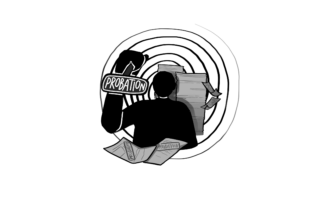

The Aragon junior varsity girls soccer team was playing one of its first home matches of the season against Menlo-Atherton, the second best team in the bay division. Because the game began at 4:30 p.m., the sun had already started to set, as darkness obscured the vision of players and referees alike. Taking into account the growing darkness, the referee blew the whistle to end the intense game a mere 45 minutes in.
Menlo-Atherton parents and players seemed outraged at the early ending of the game. However, the Aragon team accepted it, as it had become used to having short games. In recent years, abrupt endings to the home junior varsity soccer games have become such a frequent occurrence that players do not find a lack of second half surprising.
On April 6, the district school board will discuss the possibility of installing lights on the Aragon athletic field. Although the estimated $200,000 installation fee will be expensive, the impact it will have on both the school’s athletic and academic programs will be clear and overwhelmingly positive.
Lights on the football field would allow games and practices to extend later into the day, which would solve a range of issues.
Currently, because practices can only be scheduled in accordance with daylight, the limit in timing and field space poses difficulties for teams including the soccer, lacrosse, and track teams who need to use the field. Consequently, some team practices have been reduced—and in other cases, taken out altogether. This limitation is a clear disadvantage for impacted Aragon teams who compete with their athletic rivals.
Additionally, athletic contests are scheduled earlier in the day to accomodate for the darkness, resulting in more frequent athletic early dismissals. In the case of girls’ soccer, varsity players are excused from their classes at 2 p.m. in order to have ample time to warm up for a 3 p.m. game. This means that the players miss 20 minutes of sixth period and all of seventh at least once a week for the duration of the season.
Pulling students out of their classes for sports games is clearly a problem. This not only makes the students’ academic career harder, but also makes the teachers’ jobs more complicated, as they have to schedule make-up tests, go over missed material and give up their own free time to help these students catch up.
Having lights on the field will also impact students not involved in sports. The installment of permanent lights would create more night football games in the fall, giving more students the opportunity to show school spirit and establish the school culture with their classmates under the Friday night lights.
Currently, Burlingame High School is the only school in the district with permanent lights for its field. However, SMUHSD seems to be the outlier when compared to other districts on the peninsula. Schools such as Half Moon Bay, Terra Nova, Jefferson, South San Francisco, Carlmont, Sequoia, Woodside and Menlo-Atherton all have lights on at least on field. Moreover, El Camino is already lined up to have lights installed in the near future.
As of now, the school board is contemplating the effectiveness of installing field lights. With permanent placement of field lights, students will be able to have more practices and games and will be able tostay in class longer, which will allow them to succeed in both the academic and athletic atmospheres.
For a school board whose supposed mission is to ensure that students are receiving education, the installation of lights would clearly help them meet this goal. Hence, the only question remains, “What are we waiting for?”


